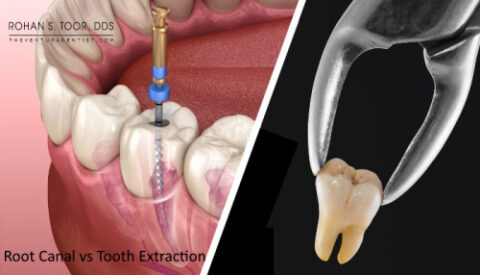
Why Not Perform Tooth Extraction Instead of Root Canal?
A root canal treatment is a procedure which involves removing the damaged tissue and pulp, disinfecting, filling, and sealing the tooth. On the other hand, tooth extraction is a procedure wherein the tooth is completely removed from its socket. Dentists will usually recommend a root canal over tooth extraction because they want to save your natural tooth. In this post, we will discuss the reason why you should opt for a root canal instead of tooth extraction.
What is the Reason Why You Should Choose Root Canal Over Extracting a Tooth?
A root canal is better than extraction in a sense that it’s essential to save your natural tooth. Once the tooth has been extracted, an empty space is left in the mouth which can be a breeding ground for bacteria. It can cause an infection and spread to other teeth. Additionally, a missing tooth may cause the neighboring teeth to lose physical support, be weak, and be prone to infection.
In an endodontic treatment, the endodontist removes the infected pulp inside the tooth, cleans the root canal, fills, and seals it. Then, the tooth is restored using a crown or filling, making it look and function like a normal tooth.
Root Canal vs Tooth Extraction – Which Is Best for You?
Root canal therapy is ideal for patients whose teeth can still be saved. On the other hand, extracting a tooth is necessary in advanced cases of tooth decay wherein the natural tooth can no longer be saved. The best treatment option differs from one patient to another, but the general rule is to save the natural tooth whenever possible. Root canal and tooth extraction have their advantages and disadvantages. The decision of which procedure to choose will depend on your overall oral history and personal preference.
What’s the Difference between Root Canal Treatment and Tooth Extraction?
A root canal treatment repairs and saves a damaged tooth instead of removing it. During the procedure, the dentist removes the damaged tissue including the nerve from inside the tooth. The tooth is cleaned and disinfected. The endodontist then fills and seals the tooth. A tooth extraction is completely removing the affected tooth in its socket, including the infected tissue and the nerve which causes the pain. Sometimes, people refer to it as pulling a tooth.
How Does Root Canal and Tooth Extraction Relieve Dental Pain?
During tooth extraction, the dental pain is removed because the infected tissue including the nerve causing the pain are removed together with the tooth. Meanwhile, during a root canal treatment, the damaged tissue and the nerve inside the tooth are removed by the dentist.
Is It Important to Keep Your Natural Tooth?
Yes, saving the natural tooth through endodontic treatment has many advantages like efficient chewing, normal biting force, natural appearance, and added protection from possible infection or wear. This is the reason why you might need root canal treatment. A tooth extraction should be the last resort because missing teeth can cause complications and oral health problems.
Which is More Painful, Root Canal or Pulling a Tooth?
Modern methods and anesthetics make root canal therapy almost painless. When compared to patients who select tooth extraction, people who choose root canal therapy are six times more likely to say it was painless.
Is Root Canal Safer than Tooth Extraction?
Yes, root canal therapy is safer than tooth extraction because there are minimal to no long-term risks associated with it. The risks involved with extracting a tooth are greater than those of a root canal. There are two common risks of an extraction. One, the bone that had held the tooth will start to lose mass and volume. Second, a misaligned bite can result from adjacent teeth moving out of alignment. Learn
What are different types of Root Canal Treatment?
Is a Root Canal Absolutely Necessary?
Yes, a root canal is necessary when the tooth pulp becomes infected or inflamed (which could lead to an abscess). Root canal treatment prevents the spread of infection, eliminates toothache, and saves the tooth from extraction.
When Is Root Canal Not an Option?
It may be too late to save a tooth if the deep layers of the pulp become infected. Moreover, if a considerable portion of a tooth is lost and a crown can’t be placed on what is left, root canal therapy is no longer a viable solution.
When Should a Tooth Be Extracted?
A tooth should be extracted if it becomes decayed, infected, or damaged beyond repair. Tooth extraction might be the only option if the tooth can’t be repaired with a dental filling or crown because of trauma or extensive decay.
What else you should know about Root Canal besides it’s dissimilarity to Tooth Extraction?
Root canal treatment, commonly known as
Endodontic therapy is a common dental procedure used to save a severely damaged or infected tooth. It involves removing the infected pulp, cleaning and shaping the root canals, and sealing them with a filling material. Other important facts to be aware of include the need for a crown after the procedure, potential complications like infection or inflammation, and the effectiveness of the treatment in preserving natural teeth. When it comes to cost,
root canal cost without insurance can vary depending on factors such as location, severity of the problem, and insurance coverage.
Are you a candidate for a root canal treatment or tooth extraction? Don’t waste any time and contact
Dr. Rohan Toor at
Rohan Toor Dental Care. Call us today at
(805) 639-3050 to schedule an appointment.


